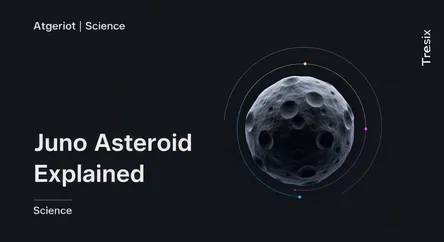Science
Juno Asteroid Explained

Discover Juno, one of the largest asteroids in our solar system. Learn why this rocky giant is a key subject for astronomers studying our origins.
What is it?
Juno, officially known as 3 Juno, is one of the largest asteroids in the main asteroid belt located between Mars and Jupiter. Discovered in 1804, it was the third asteroid ever identified. It's classified as an S-type asteroid, indicating a stony composition rich in silicates. Despite its size, accounting for roughly 1% of the asteroid belt's total mass, Juno is known for its irregular shape and a notably reflective surface, which once made astronomers overestimate its size. It possesses a large impact crater, suggesting a violent history.
Why is it trending?
Interest in asteroids like Juno is consistently high due to their importance in understanding the early solar system. While no mission has specifically targeted Juno, it is frequently studied using advanced ground-based telescopes with adaptive optics. These observations provide new details about its surface, rotation, and composition. The broader focus on asteroid mining and planetary defense also keeps objects like Juno in the scientific spotlight, as they serve as key examples of the types of bodies future missions might explore or monitor.
How does it affect people?
Directly, Juno has no effect on daily life. However, its study contributes significantly to planetary science and safety. By analyzing its composition, scientists gain insights into the building blocks of planets like Earth. Moreover, tracking the orbits of large asteroids is a critical component of planetary defense. While Juno poses no threat, monitoring it and similar objects helps refine our methods for detecting and potentially deflecting any future asteroids that could be on a collision course with our planet, ensuring long-term safety.